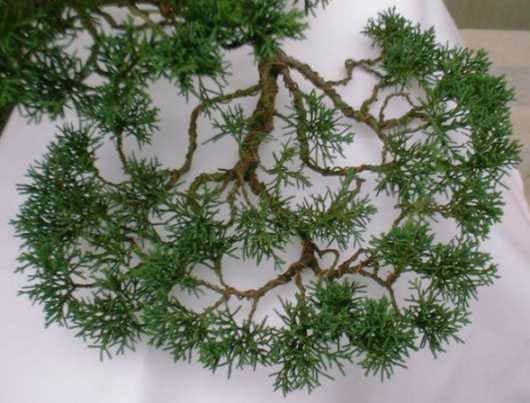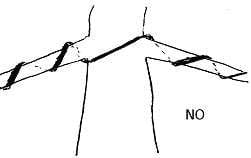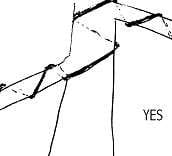Wiring is one of the main shaping processes in Bonsai and good, correct wiring helps benefit the trees branch structure. There are two main reasons for the application of wire; the first is to create movement and branch structure within your bonsai and, the second is to restrict the sap flow to the tip of the branches, to force adventitious back buds to emerge. This benefits the Bonsai designer immensely because compared to the cut and grow techniques, used prior to the development of wire application over the last 100 years, it was much more difficult to obtain highly refined branch structure and exact positioning within the design.
The best time for manipulating the branches is when the tree is fully active in growth, so the sap has risen and made the branches more flexible. The disadvantage with this is the foliage can obstruct your wiring while applying it, so some trees have to be foliage refined for easier application. Obviously there are species such as Azaleas etc. that are more brittle even when they are fully growing, therefore, you can’t be so severe in their branch movement. It can be beneficial to get an understanding of the species flexibility before working upon it.

There are two main types of wire generally used for Bonsai – Aluminium and Annealed Copper. The main differences between them are: Aluminium is generally easier to obtain than Copper because it is more broadly sold amongst Bonsai outlets. The Aluminium generally has the surface of the wire anodised so it is dark brown in colour, thus it is not obtrusive to the eye when viewing the tree. Copper has more strength than Aluminium so you don’t have to use such large grade but, where it is annealed it work-hardens so the only practical way to remove it, is to cut it off.
Wiring Basics

The basic aim to wiring is to get even strength over the whole branch or trunk that you are wiring. This is the reason why the wiring coils should be made at a 45° angle, with good equal spacing between them for stability. As you can see in the diagram there are no gaps between the wire and the branch, so this stem receives the same constant stability over its whole section. The wire thickness varies due to the flexibility of the species and the type of wire you are applying to it. For example, Coniferous Bonsai are generally more flexible than deciduous trees, so you will need to use roughly half the thickness of the branch in Aluminium wire to get a hold over the branch. This is why, in Japan, they mainly use Copper wire for a more understated appearance because you only need to use approximately a quarter of the branch diameter in comparison. As for deciduous trees they are mainly wired with Aluminium at roughly a third of the thickness of branch. .

If the first primary wire does not hold sufficiently it is possible to place a second parallel wire for more support, providing you follow the same existing wire line without crossing the wire. The reason why crossing wires is not advised is because it does not restrict the sap flow evenly and, causes more callusing at the crossing points; therefore the wire has to be taken off sooner than required.
Trunk Side View

This method of wiring should be undertaken throughout the whole tree for exact branch positioning but, there are certain rules you should consider when anchoring the wire. With the main trunk wiring you should anchor in the soil at the base of the stem, then follow the same wiring method to the apex but, with side branch wiring you should consider the following:

When wiring side branches it is preferable to wire two branches to get anchorage from one another, this is why you should wire branches at varying heights on the trunk so it does not cantilever as with bar branch wiring.
Top View

Once your main wire has been applied to the tree’s side branches, you can then apply the smaller secondary wire to open up your foliage pads. When applying a secondary wire along the branch fork, you should stabilise the wire from the primary one so there is plenty of anchorage.

The general application of wire is to achieve flat foliage pads within your design but, you should always try to finish your wire at the end of the shoot on the upward stroke, just underneath the bud or new shoot. This directs the bud towards the light, otherwise you can actually lose side branches due to the tree trying to rectify its buds towards the correct direction. This method mainly applies to Evergreens, rather than Deciduous Bonsai, because these species suffer far more from changing their foliage direction.

When applying your wire it is better to always start with your largest grades first and work down proportionally in size over the whole tree, so you can apply your smaller grades of wire in the same direction as your larger, to prevent crossing wires. It is easier to wire towards yourself rather than away, so this is the reason when putting on smaller grades of wire on the foliage pads. You should apply wire to the closest branches to the trunk first and work away towards the tip of the pad.
